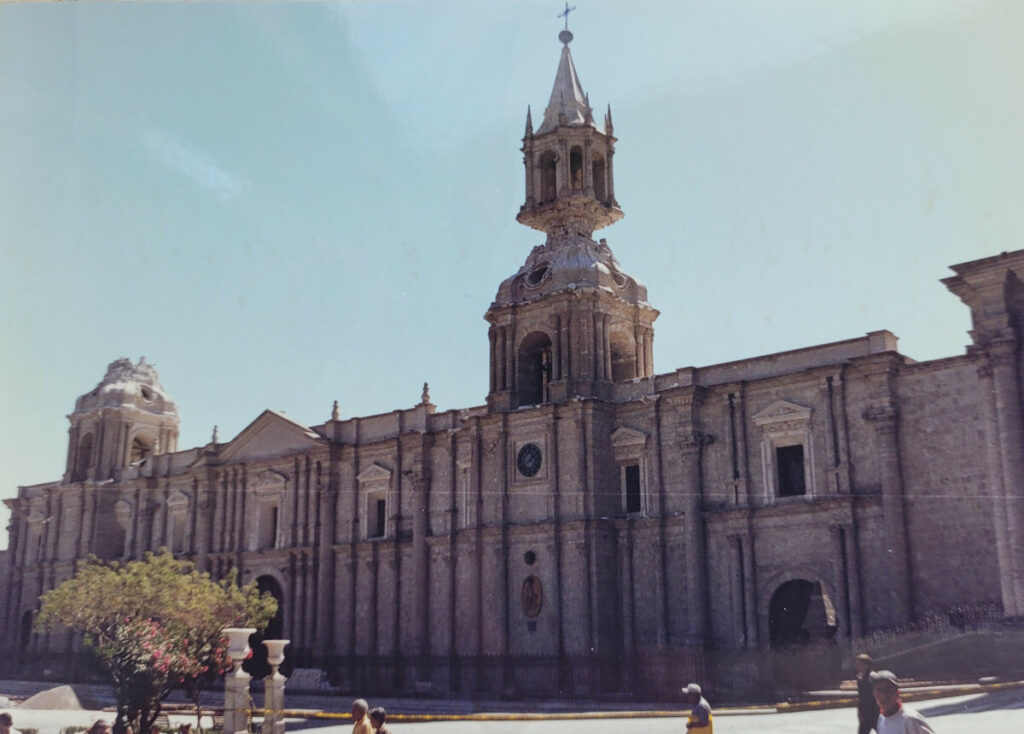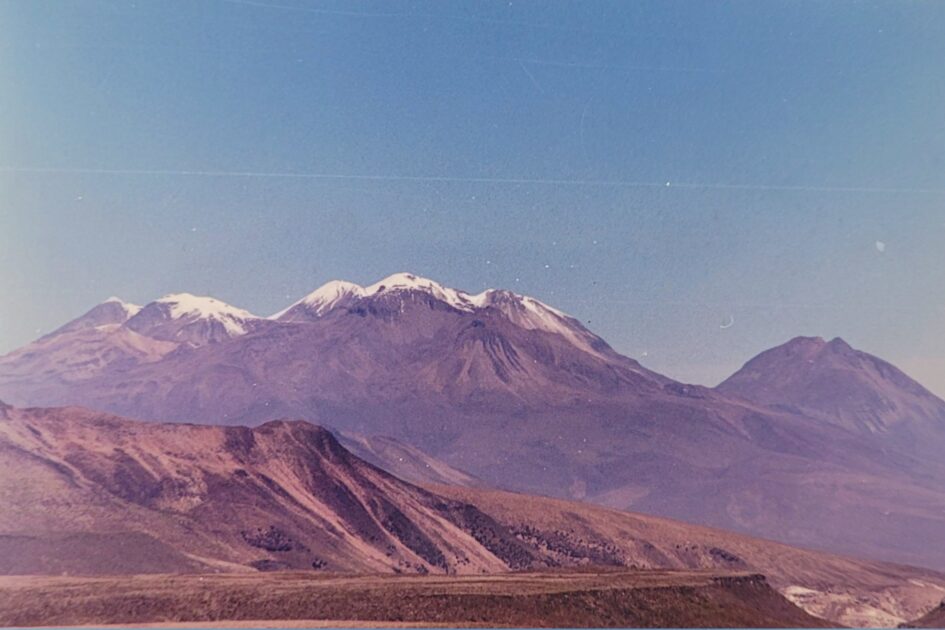AREQUIPA: THE WHITE CITY AT THE FOOT OF VOLCANOES
After an overnight journey, we arrived in Arequipa – the “White City” named for its stunning buildings made of white volcanic sillar stone. Our cozy B&B near Plaza de Armas (just $4 per person) became the perfect base for exploring this UNESCO-listed city perched at 7,660 feet above sea level.
Santa Catalina Monastery: A City Within a City
Our first day was spent exploring the magnificent Santa Catalina Monastery, founded in 1579. This sprawling complex is a labyrinth of narrow streets, vibrantly painted walls, and mysterious cloisters. Fascinating fact: For centuries, the convent housed wealthy Spanish girls who often entered by family decree, bringing their servants and luxury items with them.

Chachani Volcano: A Test of Endurance
The next day brought our biggest challenge – a two-day ascent of Chachani volcano (19,915 ft). This dormant giant, whose Quechua name means “brave one,” gave us a humbling lesson in high-altitude trekking. Spending the night at base camp (16,400 ft), we experienced classic altitude symptoms – loss of appetite and pounding headaches.
Juanita: The Ice Maiden
After descending, we visited the Santuarios Andinos Museum to see the remarkably preserved mummy of Juanita – an Inca girl sacrificed to the gods over 500 years ago. Her body, preserved in ice, was discovered in 1995 on Ampato volcano. This haunting relic offers profound insight into Inca capacocha rituals.

Colca Canyon: Where Condors Soar
Our final Arequipa adventure was a two-day trek to Colca Canyon ($17) – one of the world’s deepest canyons (10,725 ft). The highlight was dawn at Cruz del Condor, where we witnessed Andean condors – sacred Inca birds – riding thermal currents. Along the way, we visited traditional villages where local women in embroidered skirts and hats sold handmade textiles.
Arequipa left us with contrasting impressions – the colonial charm of its white stone architecture versus the raw power of surrounding volcanoes. Nowhere is Peru’s blend of colonial and pre-Columbian heritage more vividly displayed.

Leave a Reply